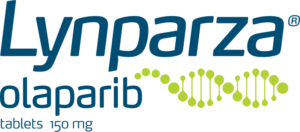
LYNPARZA (olaparib) is a first-in-class PARP inhibitor and the first targeted treatment to block DNA damage response (DDR) in cells/tumors harboring a deficiency in homologous recombination repair (HRR), such as those with mutations in BRCA1 and/or BRCA2. LYNPARZA has been approved for the treatment of multiple cancer types, including ovarian, breast, prostate, and pancreatic cancers, across various regions worldwide. The drug is being jointly developed and commercialized by AstraZeneca and Merck (known as MSD outside of the United States and Canada). LYNPARZA’s extensive clinical program continues to explore its potential in multiple tumor types and settings.
Breast cancer is a malignant tumor that originates in the cells of the breast, commonly affecting the ducts and lobules. It is the most common cancer among women worldwide, though it can also occur in men. The development of breast cancer involves the abnormal growth of breast cells that can invade surrounding tissues and spread to other parts of the body (metastasize). Risk factors include genetic mutations (such as BRCA1 and BRCA2), family history of breast cancer, hormonal influences, and certain lifestyle factors such as alcohol consumption and obesity.
Early detection through screening methods like mammography, breast self-examinations, and clinical breast exams is crucial for effective treatment and improved survival rates. Treatment options vary based on the stage and subtype of breast cancer and may include surgery, radiation therapy, chemotherapy, hormone therapy, and targeted therapy. Advancements in personalized medicine and ongoing research continue to enhance the understanding and management of breast cancer, leading to more tailored and effective treatment approaches.
Companion diagnostic testing plays a crucial role in determining the appropriateness of using LYNPARZA (olaparib) for treating breast cancer. LYNPARZA is particularly effective in patients whose breast cancer tumors have specific genetic mutations, specifically in the BRCA1 and BRCA2 genes. These mutations impair the homologous recombination repair (HRR) pathway, making the cancer cells more dependent on the PARP enzyme for DNA repair.
Companion diagnostic tests, such as the BRACAnalysis CDx, are used to identify the presence of BRCA1 or BRCA2 mutations in tumor tissue or blood samples. By confirming these genetic mutations, the tests ensure that LYNPARZA is prescribed to patients who are most likely to benefit from the therapy. This targeted approach helps personalize treatment plans, improving outcomes and minimizing unnecessary exposure to the drug for patients unlikely to respond.

To place your paper-based order, complete the Myriad Genetics paper test request form for BRACAnalysis CDx®, and fax it to 310-876-3216, or insert the form in the Myriad Genetics specimen collection kit before shipment.
LYNPARZA (olaparib) is a PARP inhibitor that works by blocking the PARP enzyme, which helps repair damaged DNA in cells. In breast cancer cells with BRCA1 or BRCA2 mutations, this inhibition prevents the cancer cells from repairing their DNA, leading to cell death. This targeted approach is particularly effective in tumors with these specific genetic mutations.
Patients with HER2-negative metastatic breast cancer are eligible for LYNPARZA treatment if they have a germline BRCA1 or BRCA2 mutation. Eligibility is determined through companion diagnostic tests, such as the BRACAnalysis CDx, which identify these genetic mutations in tumor tissue or blood samples.
Common side effects of LYNPARZA include nausea, fatigue, anemia, vomiting, diarrhea, decreased appetite, headache, dizziness, and abdominal pain. More serious side effects can include myelodysplastic syndrome (MDS), acute myeloid leukemia (AML), and pneumonitis. Patients should discuss potential side effects with their healthcare provider to understand the risks and how to manage them.
LYNPARZA is administered orally in the form of tablets. The typical dosage is 300 mg taken twice daily, with or without food. The exact dosage and treatment schedule will be determined by the healthcare provider based on the patient’s condition and response to the therapy.
Yes, LYNPARZA can be used in combination with other treatments for breast cancer. It is often used as monotherapy but can be combined with other therapies depending on the specific clinical scenario and patient needs. Patients should consult their oncologist to determine the most appropriate treatment plan.
Companion diagnostic tests are essential for identifying breast cancer patients who are likely to benefit from LYNPARZA. These tests detect the presence of BRCA1 or BRCA2 mutations in tumor samples, ensuring that the treatment is targeted and effective for those most likely to respond. By confirming the genetic profile of the cancer, these tests help personalize the treatment plan, optimizing outcomes for patients with advanced breast cancer.

AstraZeneca (LSE/STO/Nasdaq: AZN) is a global, science-led biopharmaceutical company that focuses on the discovery, development, and commercialisation of prescription medicines in Oncology, Rare Diseases, and BioPharmaceuticals, including Cardiovascular, Renal & Metabolism and Respiratory & Immunology. Based in Cambridge, UK, AstraZeneca operates in over 100 countries and its innovative medicines are used by millions of patients worldwide. Please visit astrazeneca.com and follow the Company on social media @AstraZeneca.

At Merck, known as MSD outside of the United States and Canada, we are unified around our purpose: We use the power of leading-edge science to save and improve lives around the world. For more than 130 years, we have brought hope to humanity through the development of important medicines and vaccines. We aspire to be the premier research-intensive biopharmaceutical company in the world – and today, we are at the forefront of research to deliver innovative health solutions that advance the prevention and treatment of diseases in people and animals. We foster a diverse and inclusive global workforce and operate responsibly every day to enable a safe, sustainable and healthy future for all people and communities. For more information, visit www.merck.com and connect with us on X (formerly Twitter), Facebook, Instagram, YouTube and LinkedIn.